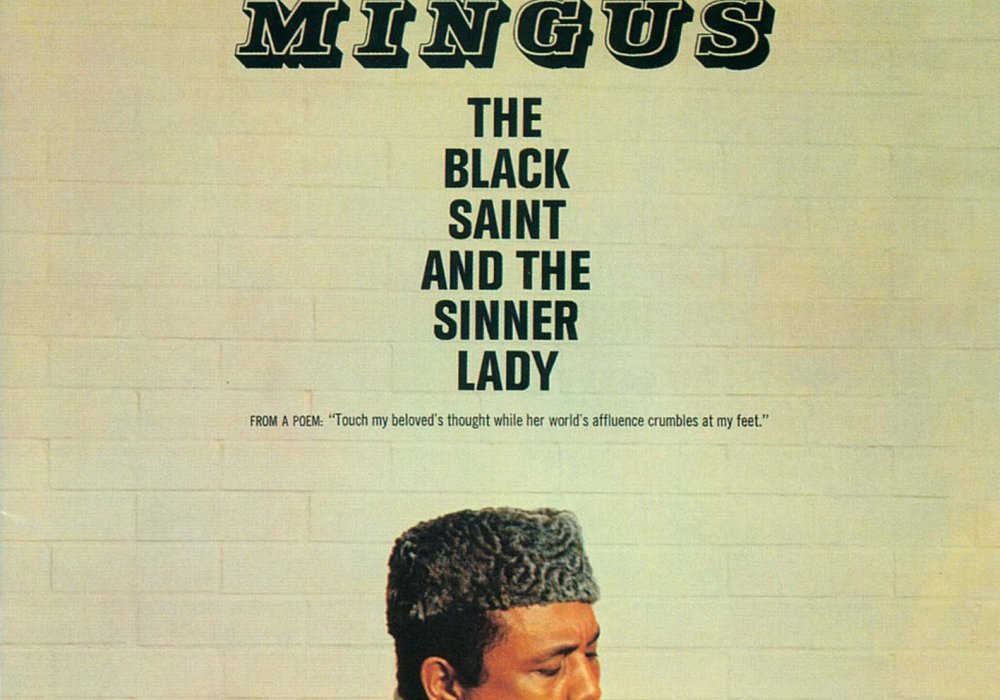
The Black Saint and the Sinner Lady : Charles Mingus (#39)
Charles Mingus | The Black Saint and the Sinner Lady (July 1963)
Impulse! (USA)
Avant-garde Jazz – 39:25
“Touch my beloved’s thought while her world’s affluence crumbles at my feet.”
The arts have always been seen as an effective form of therapy for those facing mental health issues. Whether it is painting, acting or music, there is something deeply therapeutic about expressing your emotions through the medium of creativity. When words fail you, knowing that you can still find a way of venting those frustrations, fears and follies can be liberating. It perhaps comes as little surprise to realise that many of the great artistes – in a variety of fields – have all suffered from some form of mental illness. In modern music alone, such big names as Brian Wilson, Ray Davies, Kurt Cobain and Syd Barrett have all struggled as a result of conditions such as bipolar disorder. A 2015 survey by Help Musicians UK found that 60 percent of musicians suffered from depression, with 70 percent saying their mental health had taken a hit as a result of touring. It is a shockingly high statistic, but perhaps unsurprising given the nature of art (in a wider sense of the word) and the type of people it attracts.
It probably shouldn’t come as a shock then to learn that Charles Mingus used his own compositions as a way of finding therapy. He suffered from depression, with his output fluctuating between short bursts of extreme creativity that briefly punctured long periods of inertia. By the time he recorded The Black Saint and the Sinner Lady in 1963, Mingus had shortly come off of a disaster with the infamous Town Hall Concert; his attempt to record a free-style live concert in 1962 – a dream of creating a working document of a true jazz workshop – had ended in chaos. Undeterred, he pushed on with his next record, putting The Black Saint and the Sinner Lady together in just three months. Clearly, this was his way of shaking off the demons; if any doubts remain, Mingus asked his psychotherapist, Edmund Pollock, to help pen the linear notes on the album sleeve. Interestingly, each of the four tracks is also given a subtitle, perhaps indicating that Mingus wasn’t always confident that people would interpret his music in the way he wanted.
There is no escaping that this is a true jazz album; like many of those which I have already encountered, it is a difficult one to penetrate and I still feel lost in the genre. The Black Saint and the Sinner Lady was envisioned as a type of ballet across four tracks and six movements; there is certainly a vibe of movement throughout – from the calls and responses of the brass instruments on the opening track (Track A – Solo Dancer) to the flamenco guitar of track three (Track C – Group Dancers). But there is no consistent theme; rather it seems to change direction at random during tracks. Perhaps this is an indication of Mingus’ mind – one that was constantly looking to create new sounds and follow new ideas. However, to a non-musical ear, it often sounds like a mess. Once again the quality of the musicians’ abilities cannot be doubted – the stand-out of the group is the wonderful Spanish guitar playing of Jay Berliner. But strong musicianship is not enough and this is an album which I cannot hear holding together.
Once again I feel let down by my musical knowledge. I want to be able to appreciate jazz; to feel that I am getting something out of the experience of listening to it. But whether my ears are simply not attuned or I do not possess enough theoretical understanding – whatever the reason, I find the genre too difficult to access. Within jazz circles, The Black Saint and the Sinner Lady is regarded not just as Charles Mingus’ masterpiece but as one of the greatest jazz albums ever recorded. Yet I still feel I am missing the point. This is a difficult album to listen through to the end, and sadly is not one I intend going back to. I end up more confused than satisfied, and this is not always a good thing. I hadn’t realised until embarking on this project how prolific jazz was in the early 1960s. I’m just thankful that, as we reach the mid-1960s, it had reached its peak; this may be its finest moment, but I regret that its perceived brilliance has all but passed me by.
If you have a Spotify account, you can listen to The Black Saint and the Sinner Lady here:
Next time: Live at the Apollo by James Brown